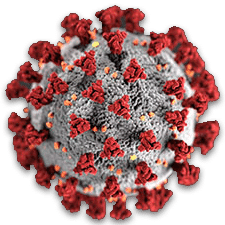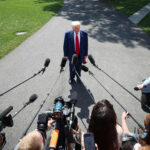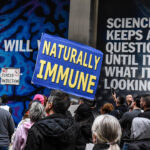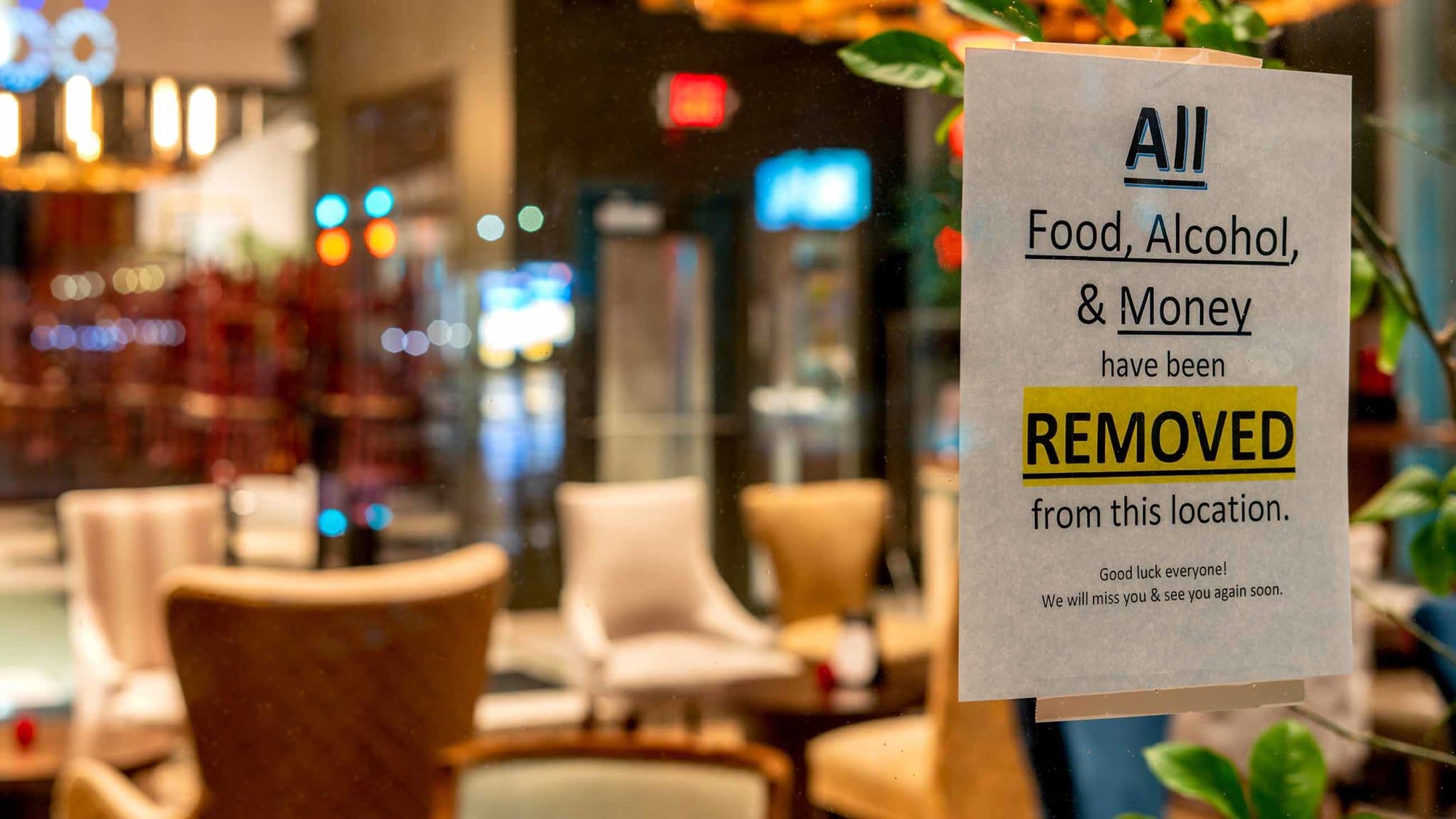One hundred days. That was the temporal milestone, passed on Thursday, marking the period since the World Health Organization says it was first notified that a novel and, it seemed, deadly contagion was circulating in China’s Hubei Province, centered on the city of Wuhan. Over the subsequent three months, the world has received near daily lessons in zoonotic transfer, viral shedding, and pandemic arithmetic: To date, some 1.6 million people around the world are confirmed to have been infected with SARS-CoV-2, the virus that causes the disease dubbed Covid-19 — including British Prime Minister Boris Johnson, who went into, and emerged from, intensive care over the course of the week.
The number of global deaths attributable to the disease will most assuredly reach 100,000 before the weekend is out, though both sets of figures — infections and deaths — are almost certainly undercounts.
In the U.S., which stumbled (some would say bumbled) in responding to its first reported case 81 days ago, more than 466,000 cases have surfaced, and nearly 17,000 are dead. Images of mass graves being dug on a spit of land in the waters separating the Bronx and Queens in New York City — a preemptive expansion of the island’s historical use as a burial ground for those whose families cannot afford an alternative, or whose bodies go unclaimed altogether — seemed to underscore a bleak new normal. “We, the funeral directors, are overwhelmed,” Brooklyn undertaker Thomas Cheeseman, told ABC News on Thursday. “We’re inundated. The crematory can’t even take bodies for two weeks.”
Against such sobering realities, there were signs of hope: Italy’s infection curve, the first in the West to put exponential growth on full display, began to slope downward this week. Spain reported a 17-day low in coronavirus deaths, while in China, where it all began, officials ended their lockdown of Wuhan, allowing people and commerce to slowly, tentatively reanimate. “It’s just math,” Natalie Dean, an assistant professor of biostatistics at the University of Florida, told The New York Times on Wednesday, in commenting on the small signs that collective isolation is working. “If people dramatically reduce the number of people they’re interacting with, that will reduce the spread of the disease.”
Those reduced interactions, of course, are eviscerating whole economies in such historic ways that few experts seem fully able to describe it. More than 16 million Americans filed for unemployment in the past three weeks, according to the U.S. Department of Labor. That’s more jobs lost in three weeks than the previous recession managed to shed over two years. Forecasts of total U.S. unemployment surpassing that of the Great Depression are “becoming routine,” according to Politico. And even when this pandemic is finally curbed — by extreme social distancing and, it is hoped, a vaccine — it will be very long time before things return to normal. “There will likely be some permanent damage inflicted on the economy,” Greg Daco, chief U.S. economist at Oxford Economics, told Vox on Thursday.
Of course, thoughts of economic recovery — however slow and lamely it may come — remain mere daydreams in light of a virus that is far from beaten, and indeed, threatens that its worst blows may be yet to come. “In the fall, I think there is at least a 75 percent chance it will come back with a second wave as it did in 1918 and 1957 pandemics,” Nicholas A. Christakis, director of the Human Nature Lab at Yale University, told the American Medical Association earlier this week. “I don’t know that it will be deadlier, but there will be a second wave and we will have to prepare ourselves for it.”
In this week’s Abstracts, as in previous weeks, we continue to offer a roundup of coronavirus themes that defined this week’s news, and that are likely to stay relevant in the days ahead.
 |
Got questions or thoughts to share on Covid-19? |
• Although the data remains limited, newly released statistics suggest that the Covid-19 pandemic is exacting a disproportionate toll on African American communities.
ProPublica’s Akilah Johnson and Talia Buford thrust the issue into the national spotlight last week, reporting on the smattering of available city- and state-level data and finding that African Americans were far more likely than whites to contract and die from Covid-19. In Milwaukee County, where black residents make up a quarter of the population, they accounted for four in five Covid-19 related deaths. Public health experts note that African Americans are less likely to be insured, less likely to be referred for testing, and more likely to work in jobs that don’t allow the luxury of working from home, all of which may help explain the disparity. Since last month, Democratic lawmakers have pressed the federal government to release comprehensive national data breaking down coronavirus cases by race and ethnicity. On Wednesday, the U.S. Centers for Disease Control and Prevention obliged, releasing limited data on 580 patients hospitalized in 14 states. Although African Americans made up just 18 percent of the population considered in the report, they accounted for 33 percent of the reported hospitalizations.
• The CDC now recommends that all Americans wear homemade masks or face coverings, while the World Health Organization contends that there is no reason for healthy people to do so.
For weeks, public health officials have maintained that healthy individuals do not need to wear masks and that supplies should be reserved for those working directly with sick patients. As more evidence has come to light about asymptomatic carriers’ role in spreading the virus, however, the CDC has since changed its tune and begun recommending that people wear cloth face coverings while in public. The WHO, however, continues to insist that such measures are unnecessary and that there is no evidence that they protect healthy individuals from becoming infected. In an April 6 statement, the organization noted that “the use of medical masks in the community may create a false sense of security,” leading wearers to neglect other hygiene and social distancing measures. The statement also cautioned that mask-wearing could lead people to touch their faces even more, thus increasing their risk of infection. “You should absolutely not be pulling up and putting down your mask while you’re out,” Shan Soe-Lin, a lecturer at the Yale Jackson Institute for Global Affairs, told The New York Times. “If you’re going to go to the trouble of using a mask, leave it on.”
• While hospitals continue to face ventilator shortages, some doctors question whether the machines are being overused.
Ventilators — sophisticated machines which deliver oxygen into the lungs of desperately ill patients — have been a high priority item for American hospitals as the Covid-19 pandemic spreads. Indeed, demand has been so high that ventilator shortages have been widely reported and concerns about dwindling supplies of the medications used to support their use are now being raised. Nevertheless, a growing chorus of doctors is beginning to question whether the machines are being oversold. An analysis of ventilator use in New York City, home to a major outbreak of the virus, found that only 20 percent of patients put on the machines survived. Comparison research from the U.K. and for China also provided dismaying survival numbers. Doctors acknowledge that people are only put on ventilators when they are desperately ill, meaning their odds are lower anyway, but they worry that the machines are less effective than with traditional pneumonias. Others raise concerns about the damage to lungs that ventilation may cause. As a result, there are new suggestions that perhaps less invasive forms of oxygen delivery might be considered ahead of ventilation use, such as CPAP machines. But while such positive airway pressure devices do seem to also offer aid, health officials have warned that their design can also release viral particles into the air.
• Wisconsin went forward with its primary election on Tuesday, the first state to do so since stay-at-home orders have been instituted across the country.
Wisconsin Gov. Tony Evers attempted to postpone the election with a last-minute executive order, but was overruled by the state’s Supreme Court. Though in-person voting was allowed to proceed, only a small fraction of the state’s voting sites were open due to a shortage of poll workers. In Milwaukee, only 5 polling sites were open, a stark contrast to the usual 150. In Waukesha, about 20 miles west of Milwaukee, one polling place was open for a population of 70,000. A much larger number of state residents attempted to vote via absentee ballots than in past elections due to the fear of gathering in public, leading election officials to become overwhelmed. Many potential voters reported that they had not received their ballots by Tuesday. In an attempt to address the issue, a federal district judge ordered the state to accept ballots through April 13th, but this ruling was overturned by the U.S. Supreme Court, preventing potentially thousands of state residents from voting.
• Service workers around the country are protesting for better protections and wages.
Workers designated by state governments as “essential” — itself a vague designation that some companies have exploited — are organizing to demand better physical and financial protection from their employers. Workers for Target’s delivery platform, Shipt, staged a nationwide walkout Tuesday and asked customers to boycott the company’s app on Friday, demanding hazard pay, protective gear, and paid sick leave. In California, cooks and cashiers from dozens of fast food chains protested on Thursday with similar demands. Box-packers at a New Jersey warehouse for bookseller Barnes & Noble demanded safer working conditions. Laid-off workers for General Electric want to get back to work — demonstrating at several factories and asking that the company re-tool supply lines to make ventilators. Some of these efforts have borne fruit: Amazon announced new safety and pay policies (although many workers say they’re being unevenly introduced), and Uber drivers received face masks and won a major court ruling in their fight for benefits. Some have observed that the gig economy has essentially allowed Americans with the luxury of working from home to outsource the risk of contracting the virus to lower-paid workers who must now fight for basic protections.
There’s plenty of excellent reporting and analysis available.
Below is a list of some of the journalists, experts, and publications that Undark is following.
- Helen Branswell (@HelenBranswell), senior writer, infectious diseases, STAT
- Peter Sandman and Jody Lanard, risk communication experts
- Kai Kupferschmidt (@kakape), molecular biologist and science journalist, Science Magazine
- Trevor Bedford (@trvrb), computational biologist, Fred Hutchinson Cancer Research Center, Seattle
- Lawrence Gostin (@lawrencegostin), professor of global health law, Georgetown University
- Muge Cevik (@mugecevik), infectious disease researcher, University of St. Andrews
- Julia Belluz (@juliaoftoronto), health correspondent, Vox
- Ed Yong (@edyong209), science writer, The Atlantic
- Kaiser Health News, full coronavirus coverage
- ProPublica, full coronavirus coverage
- U.S. Centers for Disease Control and Prevention, latest coronavirus news
- World Health Organization, rolling coronavirus updates
- Global Covid-19 Case Tracker, Johns Hopkins Center for Systems Science and Engineering
- The Covid-19 Tracking Project
- The Syllabus, Coronavirus Reading Lists
- Virus Academics Twitter list
Undark will continue to provide weekly roundups of Covid-19 news each Friday for as long as the pandemic continues. You can find our own Covid-19 coverage here.
Deborah Blum, Lucas Haugen, Jane Roberts, Francesca Schembri, and Ashley Smart contributed to this roundup.










